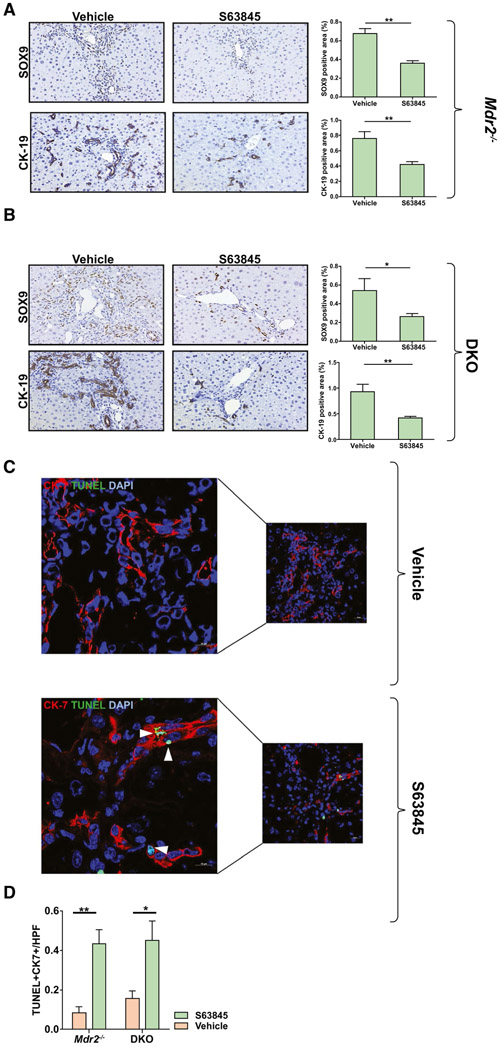FIG. 4.
MCL1 inhibition by S63845 reduces the DR cell population in Mdr2−/− and DKO mice. Mice were treated with vehicle or S63845 (40 mg/kg) daily for 5 days by tail vein injection and euthanized within 24 hours from the last dose. (A) Immunoreactivity for markers of ductular reaction, SOX9 and CK-19, was assessed by immunohistochemistry in Mdr2−/− mouse livers (n = 6). (B) Immunoreactivity for SOX9 and CK-19 was assessed in DKO mouse livers (n = 6-8). Graphs represent the respective SOX9 and CK-19 quantifications. (C) DR cell apoptosis in vehicle and S63845-treated Mdr2−/− and DKO mice was assessed by CK-7+TUNEL+ cells. Representative images (40x) of liver sections stained with CK-7 (red) and TUNEL (green). Higher magnifications of the images are presented on the left. White arrowheads point to TUNEL-positive cholangiocytes. (D) Graph represents the number of TUNEL+CK7+ cells per high-power field averaged from 10 fields per mouse tissue (n = 6). Data are expressed as mean ± SEM. *P < 0.05, **P < 0.01. Abbreviations: DAPI, 4′,6-diamidino-2-phenylindole; HPF, high-power field.

